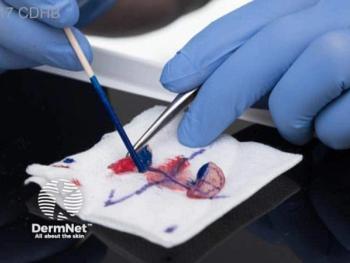
Using Diagnostic Tools for Melanoma
At a session at the 2022 Fall Clinical Dermatology Conference, 2 clinicians discuss some of the top testing methods for skin cancer.
Almost one American dies of melanoma every hour. This was the dramatic beginning of the session, “Meeting challenges in the diagnosis of pigmented lesions,” presented by Darrell S. Rigel, MD, MS, clinical professor of Dermatology, Icahn School of Medicine at Mount Sinai in New York, New York; and Laura Ferris, MD, PhD, associate professor of Dermatology, University of Pittsburgh in Pennsylvania. The presenters shared the basics of melanoma, or what they called the ABCDE of the disease:
Asymmetrical
Border less
Color change
Diameter (bigger than ¼”)
Evolving (color and size changes)
These specific indicators can aid the practitioner in correctly screening and diagnosing this disorder: to that end, the presenters noted that genomics have also become a crucial part of investigation in melanoma, helping with enhanced detection of the disease. As cancer progression is genetically driven, prediagnostic genomic testing can be a powerful tool in diagnosis.
Rigel and Ferris noted that the most available diagnostic tools rely on visual features of the lesion, using total body photography, dermoscopy, and confocal microscopy. Additionally, some clinicians use other lesion characteristics, such as impedance spectroscopy, the rapid, nondestructive, and easily automatized technique to investigate electric properties of materials, consisting of applying a sinusoidal voltage and measuring the current response. Rigel and Ferris suggest using tools depending on level of training: for example, a highly trained clinician might use dermoscopy and confocal microscopy, while someone not as well-trained would use totally body photography and spectroscopy.
Another diagnostic tool discussed was the pigmented lesion assay (PLA), a noninvasive, gene expression test that helps rule out melanoma and has the potential to reduce the need for surgical biopsies of atypical, pigmented skin lesions.
The presenters also discussed preferentially expressed antigen in melanoma (PRAME), immunohistochemical (IHC) staining, used to aid melanoma diagnosis. In a study using PRAME with 178 melanomas (89.9% PRAME plus IHC), tests identified 100% of superficial spreading, 100% arising in congenital nevus, and 91.4% of nodular, among other detections.
Learning and using these various diagnostics and assays will only enhance the diagnostics and ultimately, the treatment of melanoma.
Reference
Rigel DS, Ferris L. Meeting challenges in the diagnosis of pigmented lesions. 2022 Fall Clinical Dermatology Conference. October 21, 2022. Las Vegas, Nevada.
Newsletter
Like what you’re reading? Subscribe to Dermatology Times for weekly updates on therapies, innovations, and real-world practice tips.


















